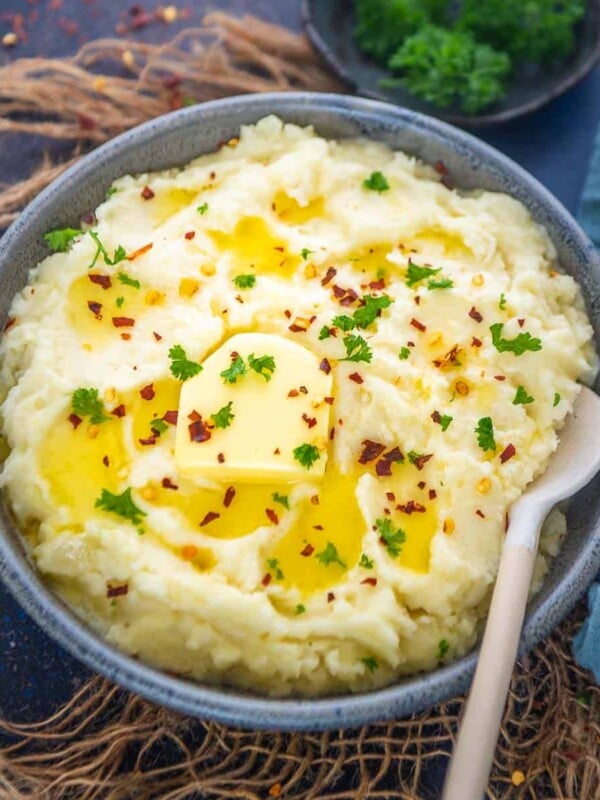Hibachi Vegetables
Make Japanese-steakhouse-style Hibachi Vegetables at home in under 20 minutes. Here is a quick and easy recipe.
Here are some more recipes loaded with lots of veggies you can try at home: Sweet and Sour Vegetables, Vegetables in Hot Garlic Sauce, Vegetable Stew, and Chinese Vegetable Fried Rice.

About Hibachi Vegetables
Hibachi Vegetables are a type of stir-fry that is popular in Japanese cuisine. These are popularly served at Japanese Steakhouses as a side dish with Hibachi dinners.
“hibachi” refers to the small, portable grills (flat hot surfaces) used to cook this dish.
Hibachi Vegetables Recipe is typically made with fresh vegetables, such as peppers, onions, mushrooms, and broccoli. They are cooked in a light sauce and served with rice.
Each restaurant has its blend of vegetables. Some make it with only zucchini and mushroom, and some add other vegetables to their stir-fry recipe. The sauce proportions may also change from restaurant to restaurant.
The recipe I am sharing is my twist on this Japanese restaurant classic. You can adapt to your taste.
The vegetables are stir-fried at restaurants on a large, flat, hot surface, but a wok or cast iron skillet works fine for home cooking.
If scaling the recipe, then fry in batches.
Ingredients
Vegetables – This dish is popularly made using zucchini, onions, mushrooms, and broccoli. You can add your other favorite vegetables, like bell peppers, carrots, cabbage, bok choy, bean sprouts, yellow squash, water chestnuts, cauliflower, snow peas, etc.
You can also make this stir fry with a combination of different vegetables.
Add a protein of choice, like boneless chicken or shrimp, with the vegetables.
Oil and Butter – Combine oil and butter for an authentic Japanese steakhouse taste. You can use canola, sesame, light olive, or avocado oil.
To make the dish vegan, replace butter with oil or vegan butter.
Garlic and Ginger add a slight hint of heat and taste.
Soy Sauce will give these stir-fried vegetables a salty, slightly umami sweet taste.
You can also use low-sodium soy sauce. For added flavor, add some teriyaki sauce.
Replace soy sauce with tamari or coconut aminos for a gluten-free version.
You can garnish the dish with toasted sesame seeds and green onions.
How To Make Hibachi Vegetables
Heat 1 tablespoon oil and 2 tablespoon of butter (salted or unsalted) in a large nonstick wok over medium-high heat.

Add 1 teaspoon minced garlic and 1 teaspoon minced ginger and sauté for 4-5 seconds.

Add the following veggies and saute for a minute.
- 1 large zucchini (cut into batons)
- 1 cup thinly sliced onions
- 1 cup broccoli florets
- 1 cup sliced button mushroom

Now add the following ingredients and mix well.
- ¼ teaspoon salt
- ¼ teaspoon ground black pepper
- 2 teaspoon soy sauce

Cook uncovered for 6-8 minutes until the liquid released by the vegetables is evaporated and the vegetables are slightly charred, stirring frequently.
Serve hot.

Pro Tips By Neha
Buy pre-cut veggies to save time. These days, they are easily available in supermarkets.
If using beans, sprouts, or greens like spinach, bok choy, etc., add them at the end of the cooking and cook for a minute.
Squeeze a little lemon just before serving for a tangy twist.
Add a little red pepper flakes, red chili sauce, or hot sauce for a spicy kick.
I like the veggies with a little crunch, but if you like them cooked, cook them for a few more minutes.
Frequently Asked Questions
Wash the zucchini and wipe it with a kitchen cloth or paper towel. Cut off ½ inch from both ends. Cut the zucchini in half lengthwise, then cut each half into quarters lengthwise. Now, cut each quarter into batons of the desired size. The batons should be of similar thickness for even cooking. There is no need to peel the zucchini.
Serving Suggestions
Hibachi-style vegetables are typically served with rice and green tea. Add chicken or shrimp to this dish to make it a complete meal.
To make a complete Hibachi Dinner, serve these vegetables with Hibachi Shrimp, Hibachi Fried Rice, Hibachi Noodles, Yum Yum Sauce, Hibachi Mustard Sauce, and Hibachi Chicken.
I don’t make steak at home, but you can use this Hibachi Steak recipe if you want to.
Please read my post on How To Make A Hibachi Dinner At Home for more details.
You Might Also Like
Craving more? Subscribe to Whisk Affair to get new recipes and a newsletter delivered straight to your inbox! And stay in touch on Facebook, Pinterest, and Instagram for all of the latest updates.

Hibachi Vegetables Recipe
Ingredients
- 1 tablespoon oil
- 2 tablespoons butter (salted or unsalted, replace with oil for vegan)
- 1 teaspoon minced ginger
- 1 teaspoon minced garlic
- 1 large zucchini (cut into batons)
- 1 cup sliced onions
- 1 cup broccoli (cut into small florets)
- 1 cup sliced button mushrooms
- 2 teaspoons soy sauce (use tamari or coconut aminos for gluten-free)
- ¼ teaspoon salt
- ¼ teaspoon ground black pepper
Instructions
- Heat oil and butter in a large nonstick wok over medium-high heat.
- Add garlic and ginger and sauté for 4-5 seconds.
- Add zucchini, onions, broccoli florets, and mushroom, and saute for a minute.
- Now add salt, pepper, and soy sauce and mix well.
- Cook uncovered for 6-8 minutes until the liquid released by the vegetables is evaporated and the vegetables are slightly charred, stirring frequently.
- Serve hot.




We love this recipe and have cooked it many times
Good balance